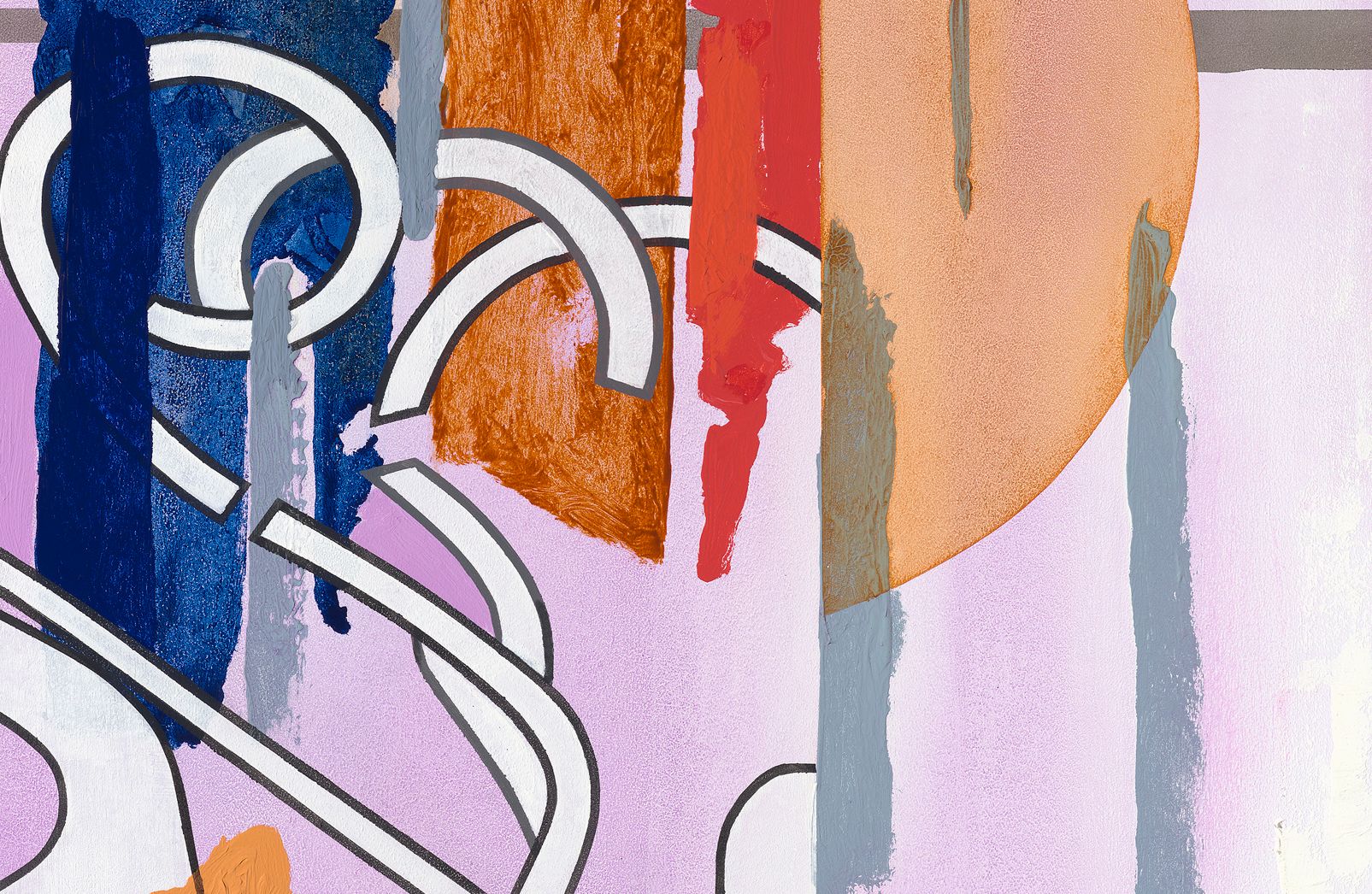Both timelines and pockets can be loosely described as utilitarian vessels: a timeline encases and organizes temporal information, while a pocket holds important belongings and tools close at hand. Sonia Almeida excavates the histories, transformations, and societal implications of these containers by choreographing together paintings, works on paper, and tactile fabric wall hangings.
The way Western societies perceive, demarcate, and value “time” has always adhered to a linear logic, a logic which has readily served Capitalist gains and limited the potential for true “free time”. This rigid concept of a continuous timeline allows for little nuance or interpretation, and yet this rigidity seems to have become increasingly eroded by the unpredictability and resulting restrictions of the ongoing global pandemic. Throughout this fraught period, some of us may have discovered a newfound and alchemical ability of creating timelines all our own. Maybe the established concept of time has been wrong all along – maybe time twists around itself like a Möbius strip, or eats its own tail like an ouroboros. half step intermingles artworks both new and old, blurring the chronological timeline and expected logic of Almeida’s oeuvre. Abstractions of an omnipresent clock, feathered swatches of clashing colors, and undulating stripes evoke a sense of life happening at different speeds: in slow motion, reversed, and stuck on repeat.
Within the worlds of music, dance, and performance, the act of “keeping time” is necessary to replicate a piece after its first presentation. Flickering across the tops of Almeida’s ten paintings, five horizontal lines abstractly suggest the bar structure of musical notation. Sometimes prominent and sometimes visually obscured, the bars link these works together by implying a fractured musical composition that can be followed across the exhibition. Dance diagrams and limbs also fade in and out of view, and these independent sets of instructions function as a call and response between the painting and the viewer: the paintings show us how to move our feet or strike a note, and invoke the natural urge to follow along.
Historically, pockets in clothing were exclusively integrated into men’s garments, while women wore detachable “pockets” tied around their waists and hidden beneath petticoats. Eventually, women’s “pockets” evolved into “reticules” – precursors to the modern handbag that were considered more fashionable the smaller they were; the implication being that a woman of status need not carry around money because finances were handled by her husband. As the women’s movement took place in the West and women became increasingly financially independent, many women began to wear men’s trousers. Pockets were viewed as a radical and at times transgressive site where women could hide valuables on their person, thus giving them increased agency and power in society. Almeida has draped swaths of velvet corduroy across the walls of the exhibition, attaching pockets throughout. Slipping works on paper inside of these wall pockets and behind slatted shelving, Almeida only partially reveals her visual toolbox.
By taking a half step back from defined societal structures, Sonia Almeida’s practice takes stock of what lies behind and what may come ahead. The works in the show provide us with cues that coalesce to form a subtle call to action: maybe the time has come to collectively reprioritize, reshuffle, and recalibrate.
– Moira Sims















































































































